Counterfeit jewelry mainly lies in the material aspect, with fake and inferior materials posing as natural to act as high-end jewelry. Now will be a few identifications and the method that differentiates false to introduce to everybody.
Identification of diamonds
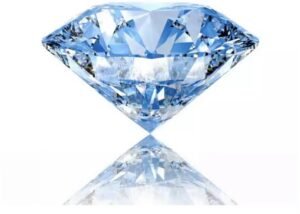
1. Diamonds are the hardest of all-natural substances. Diamonds cut any other stone, but no other stone cuts a diamond.
2. It can mark with “standard hardness tester“. If the hardness is less than 9 degrees, it is a false diamond.
3. Diamonds are also lipophilic. Suppose you draw a line across the surface of a diamond with a pen. In that case, a continuous straight line will appear, while other stones show intermittent breaks.
4. can also be observed through 10 times the magnifying glass, under 10 times the magnifying glass, most of the diamond visible flaws, there are triangular growth lines, the surface of the diamond has “red, orange, blue” and other different colors of the “fire” light.
5. The most accurate and reliable method is to use a “thermal conductivity meter” to measure the thermal conductivity data to distinguish true and false diamonds, but the price of a “thermal conductivity meter” is relatively high.
As diamond is the first jewelry of nobility and luxury, it is very common to replace or fake diamond with cheap, artificial, or even glass in the market. The types of fake diamonds are as follows:
1. Zircon: Zircon is very similar to diamonds, making it the best substitute. The identification method is that, due to the polarization and large birefringence of zircon, when the processed edge surface is observed with a 10-fold magnifying glass, it can see that the bottom edge has obvious birefringence from top to bottom, while diamond has no birefringence phenomenon.
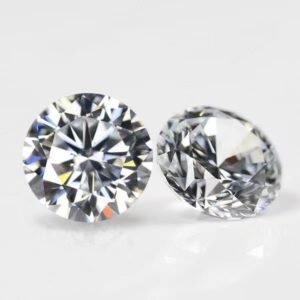
2. Glass: the refraction rate of glass is very low, without the flashing color light of diamond; Especially when the glass loses its luster underwater, you can tell it at once.
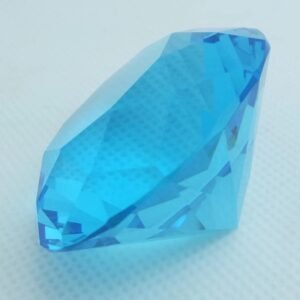
3. Soviet drill: Soviet drill is also called cubic zirconia, first developed by the Soviet Union. Cubic zirconia is a manufactured compound, but it is close to natural diamond dispersion and refraction rate. It has the attractive appearance of “fire” shining. However, its hardness is low (8.5) and can be distinguished from diamond by a cross-cut. And the thermal conductivity is much lower than diamond, can be “thermal conductivity meter” identification, accurate to distinguish it.
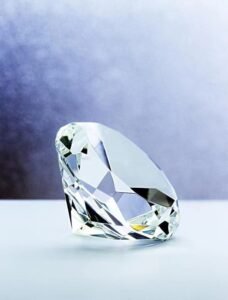
4. Crystal: although crystal is a natural mineral transparent crystal, the lack of diamond color light after processing like a diamond.
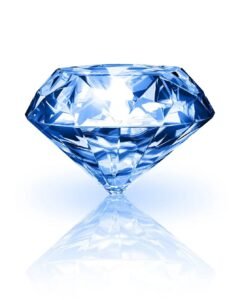
Identification of red gems
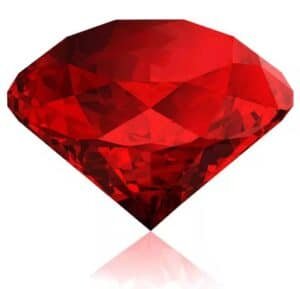
Most natural rubies have cracks, and natural rubies without flaws and cracks are very rare. The artificial ruby has the same color, fewer internal defects or crystalline inclusions, clean and larger blocks. Like a precious gem, the natural ruby of more than 3 carats above on the market is very rare. If encounter the ruby of larger body, be about to cause attention, because natural ruby is taller than artificial ruby value 1000 times, a little neglect, be cheated on the meeting.
Natural ruby has stronger “dichromatic sex”, alleged dichromatic sex, look from a different direction, namely gules and orange gules 2 kinds are tonal, if it has a kind of color only, it may be gules spinel, garnet or gules glass to wait.
Red spinel is very similar to natural rubies, and the two are most likely to be confused, so extreme caution must be taken.
Identification of sapphire

Natural sapphires tend to be uneven in color, with most having flat growth lines. The artificial sapphire color is consistent. Its grow grain is arc belt, often visible inside body, has crumb shape or bead shape bubble.
Natural sapphire also has apparent dichromatic sex. Look for blue from one direction and look for bluish-green. Other gemstones can be distinguished by their different coloration from natural sapphires.
Additional, the simplest method can use hardness to determine a method, natural sapphire can be on topaz carve out a mark, and another blue gem is carved on topaz hard give mark when buying jewelry so, be like beside do not have the instrument, want to have topaz only, also can solve a few problems sometimes.
Identification of emeralds
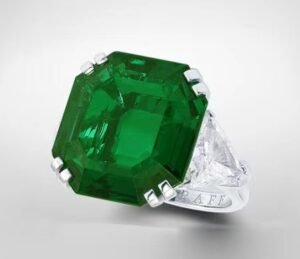
In nature, there are many kinds of green transparent gems similar to emeralds, such as emerald, tourmaline, fluorite, olivine, garnet and zircon, etc. Among them, tourmaline, fluorite and emerald are easily confused. To the naked eye observation, green jade is generally translucent, often has interwoven porphyritic fiber structure and high-quality emerald transparent crystal. Emeralds have a hardness of 7.5-8, while fluorite has a low hardness of 4. Emerald has a smaller proportion, while fluorite, tourmaline and jade have a larger proportion. Zircon has strong dispersion and obvious shadow.
Identification of opal
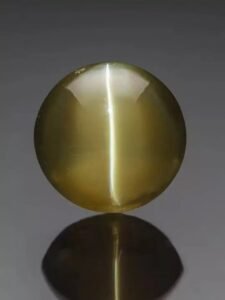
In recent years, a type of fiberglass cat’s eye ring, set in gold or silver, has been on the market to make it impossible to tell the real from the fake. The identification method is that when turning the ring surface, the curved top of the fake opal can appear several light bands simultaneously, while the real opal only has one. False opal eyeliner inflexible, and true opal eyeliner tensioning flexible. The true opal color is mostly brown, yellow or light green. The false opal color is diverse. Red, blue, green and other colors.
Identification of opal stones
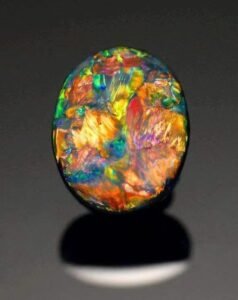
According to its color, Opal stone can be divided into black opal stone, white opal stone, yellow opal stone, etc., with the highest price of black opal stone. To lower the price of white or yellow opal stone to improve the grade, someone will use artificial methods to change color and become “black opal” to seek high profits. The main method is to turn white opal black by boiling it with sugar or injecting it with plastic. The way to identify it is that the opal that has been boiled with sugar or injected with plastic has a significantly different specific gravity, which becomes lighter when tested in water. An injection opal can also be tested with a heated needle. Natural opal hot needles do not penetrate, but injection opal can penetrate and produce a melted plastic smell.
Identification of tourmaline stones
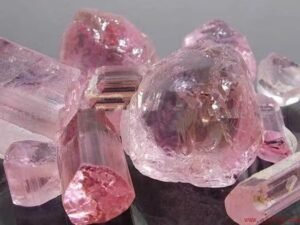
Tourmaline is a mid-range gem, but due to the peach and bright blue, tourmaline is more valuable, so there are imitations. There are two kinds of common imitation products. One is to colorless tourmaline artificial color; One is made of red glass. The identification method is that true tourmaline stone often has obvious dichroism and visible double shadow; Tubular inclusions or cotton floss can be seen in the body. The crystal cross-section is an arc-shaped triangle. These features are not found in imitation products, and the tourmaline dyed by the workmen is not difficult to identify because its color is stagnant, and it lacks the “brilliance” of natural tourmaline.
Identification of natural crystals
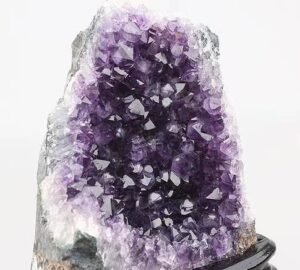
The natural crystal is clear and transparent, often containing cloud-like, star-like or flocculent gas-liquid inclusions, and often has microcracks. In addition, natural crystal has polarizing sex, visible double crystal phenomenon, for example, crystal sphere, look downward from on, meet double shadow phenomenon. Synthetic crystal or glass products, the body is pure, without cracks, internal often have small bubbles. When the sphere is viewed from above, the double shadow of the line below is not visible. With feel identification, the proportion of synthetic crystal is greater than natural crystal; Natural crystal has a cool feeling, and glass has a warm feeling.
Identification of olivine
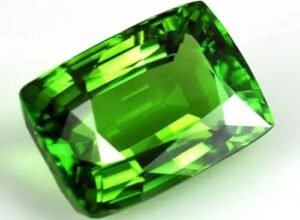
Olivine is a green to yellow, olive-like stone in the middle and lower grades. The most common on the market are imitation olivine made of colored glass. The main difference between the two is that olivine has obvious “double shadow”, and glass does not; Olivine often visible in the crystalline inclusion, glass only contain bubbles; The specific gravity of olivine is 3.5, and the hardness is 7, which is greater than the specific gravity and hardness of glass.
Identification of pearls
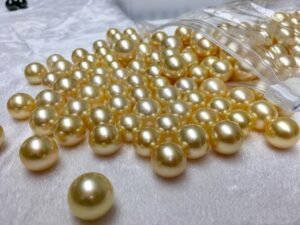
Pearl has natural pearl and cultured pearl, cultured pearl and seawater pearl and freshwater pearl points. Natural pearl production is less. The price is high; Farmed pearls can be produced in large quantities, so the price is much lower. The main difference between natural and cultured pearls is that there is no inner nucleus. The core of a natural pearl is usually just a few grains of sand or parasites or even no core. The core of cultured pearls is artificially made of larger beads, so the outer wrapping layer is thinner. Natural pearls have poor roundness on the body surface due to their random growth environment and rarely rolling foreign bodies in their nuclei. The cultured pearl core is round, so the roundness of the bead is better. Natural pearls grow for a long time, so the texture is delicate, thick bead layer, smooth skin, few “convex bubbles”, and transparent. Cultured pearls are thin, rough in texture and waxy in luster due to the short sound of beaded.
Moreover, there are often some concave and convex “bubbles” on the surface and poor transparency. If the pearl has been perforated, take a close look at the hole with a magnifying glass. If cultured pearls are cultured, you will generally see a brown line inside the pearl, which is the dividing line between the inner core that has been put in and the layer of pearl that has been grown.
At present, imitation pearls often appear on the market, generally, with glass beads coated with fish scale powder or silver powder made, its luster and true pearls are different, weight is not the same, a little experience can identify. If a fingernail or knife is scraped, it can be identified immediately.
To identify pearls and the jewelry industry has some advice:
① If it is a string of pearls, their color, size, shape and luster are the same, that is, artificial pearls. Because real pearls can never be the same.
② The luster of the real pearl is like a rainbow, full of colors, very beautiful. Because the surface of the fake pearl paints makes the luster monotonous, there is no colorful rainbow tone.
③ The transparency of real pearls is good, and the transparency of fake pearls is poor.
④ Through the feel, real pearls have a sense of cool and smoothness, while fake pearls are often warm and greasy.
⑤ Observe with a 10 times magnifying glass, the growth texture can be seen on the surface of the real pearl, while there is no growth texture on the fake pearl, only the coating can be seen.
When crystal popularity comes later, appear on the market a lot of counterfeit is tasted, cause the trouble of consumer not only, connect even a lot of inn itself also because not quite professional, and do not know clearly.
There have been knockoffs such as:
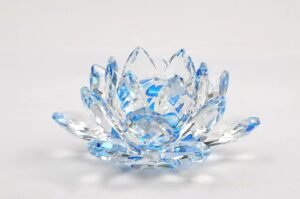
1. acrylic, plastic products, can be distinguished from the touch of the hand, temperature, hardness, in addition, acrylic, plastic easy to cause light distortion refraction, generally not difficult to distinguish, so this kind of counterfeit products are gradually rare.
2. Glass products, the first sight is clear: water, no texture, low hardness, single refractive index, and bubbles. It is also very easy to distinguish.
3. Smelting crystal, is to refer to the domestic crystal slag synthesis of crystal, like glass but has been made of seven, eight cm to ten cm size of the ball, very beautiful and good-looking, but the single refractive index, low hardness, can be distinguished by the polarizer.
4. Crystal glass is “lead glass”, molten lead metal glass products, the most on the market because the refractive index, dispersion rate is good, dazzling, and moving, the most suitable for decoration, but not suitable for spiritual use. Generally, visual discrimination can use.
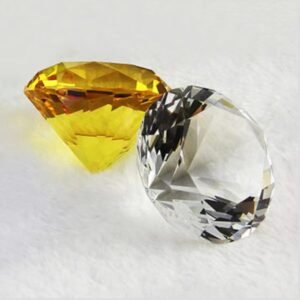
5. Artificial crystal, also known as “feeding crystal”, the original stone does not have hexagonal crystal system crystal, which is the easiest place to judge; But if it is ground into finished products, it is not good to distinguish the above method, we must use the “ultraviolet spectrometer” to distinguish true and false. The most on the market are colorless transparent white crystal, amethyst, topaz, and the crystal knockoff of water blue. I suggest that friends encounter disputed crystal ore, it is best to send a fair third party, such as identification, to identify, not much, but professional protection. If necessary, even sent to more than two appraisal institutes to identify. Best, can choose and buy “raw stone”, look at its crystal shape, growth lines, symbiotic minerals, will never be wrong.